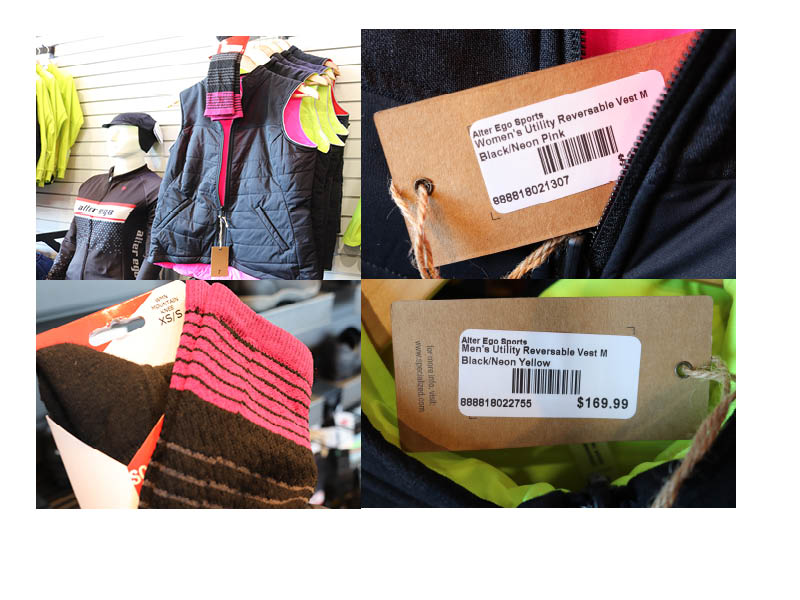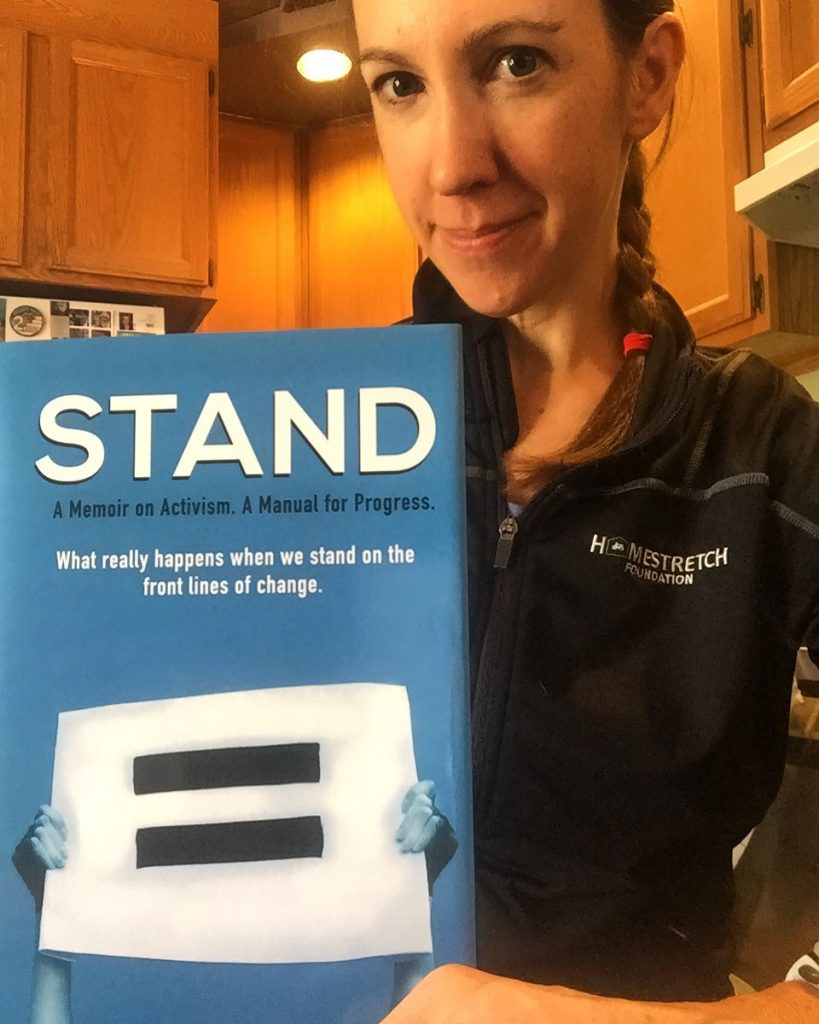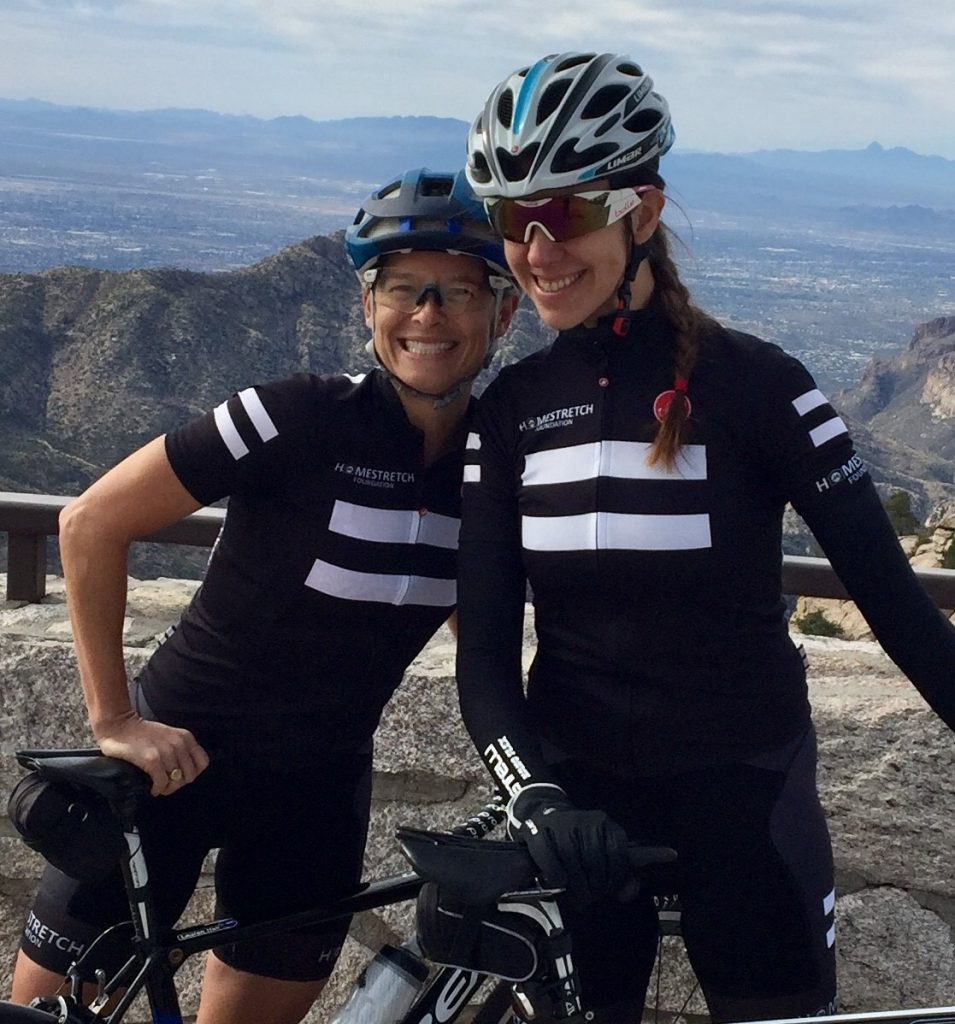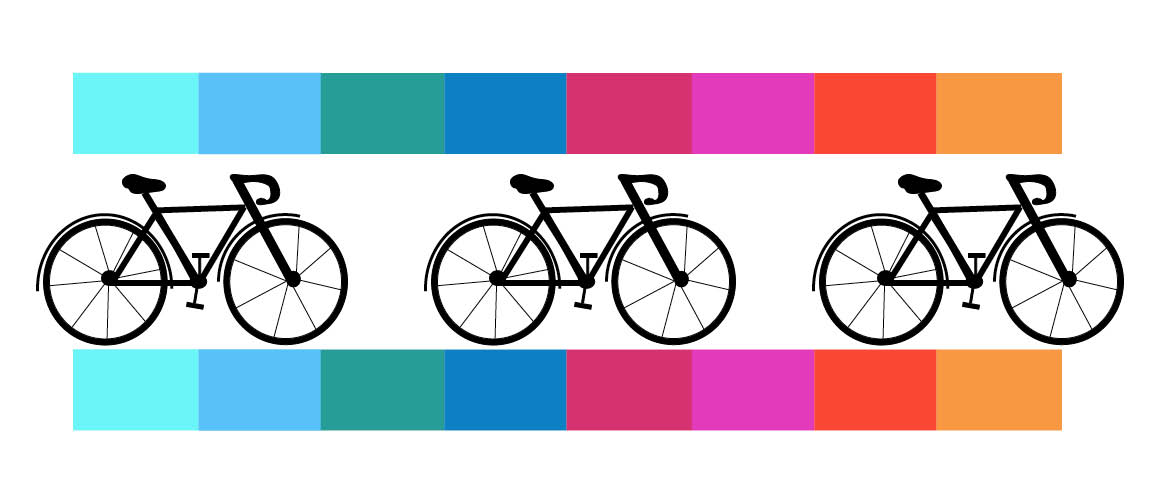Listen to the story:
I feel free as I pedal on my bike for the first time in years. My dad in front of me leading the way. I keep my eyes on the road and try to avoid constant potholes despite wanting to look up and enjoy the view.
When I do look up, I notice that most of the cyclists I pass are men. Maybe I haven’t seen many women because I’m too focused on the road.
But the second and third time I go cycling with my dad, I see that it’s still mostly men on bikes. It turns out that most cyclists in Canada are men. One-third or 34 per cent of cyclists in Canada are women, according to a CBC article.
Sexism
Sexism in sports is not a new thing, and it turns out, cycling is no exception.
Once upon a time in the 1890s, doctors believed if a woman were to ride a bike, she would become infertile, or her uterus would fall out. There was no evidence of this ever happening, of course, and it sounds ridiculous now, but doctors would discourage women from getting onto a bike. One possible explanation for this is that if women were allowed to cycle, they would have more freedom and wouldn’t need to depend on men as much to get them places.
Sexism is more evident in professional cycling than recreational riding. Individually, some women may have experienced more sexism than others. And not all sexism in cycling is blatant.
“Nobody’s done anything explicitly [sexist] to me individually, but I’m the victim of an industry that is behind in its work to develop women’s things,” says avid cyclist Elizabeth (Betsy) Troutt.
Troutt, who is taller than the average woman (standing at almost six feet), says that bikes made for women don’t typically fit her long and narrow figure.
“They only build women’s specific bikes to a size 54[cm], which is too small for me. So, I get by on a 56[cm]. I happen to be in the so-called unisex size, but it comes with stock parts on it that are men’s,” says Troutt.
If Troutt gets a unisex bike, she will likely have to spend an extra hundred or so dollars on getting a proper seat that fits her, so she won’t have to deal with saddle sores or uncomfortable riding.
“The bike industry is behind in coming up with women’s gear that is specifically suited to female bodies, female posture, female proportions, things like that,” says Troutt.

On one episode of the Love Women’s Cycling Podcast produced by Black Sheep Cycling, they dive deeper into female cycling gear. The podcast talks about the lack of quality in cycling gear for women. Stereotypes of a woman cyclist being “small and thin” is also an issue.
The managing director at Black Sheep Performance Apparel, John Polson, points out in the episode that product development in cycling specifically has always been “men first.” Wanting to make a difference, Polson started making quality cycling clothes for women. He explained it was challenging with the lack of research into women’s cycling.
Then there’s the “Shrink it and Pink it” mantra that sees products for women being made pink and flowery without an emphasis on quality. This outdated thinking still exists in products trying to cater to women or girls with pink to make it more “appealing.”
This strategy is used to market products in many different areas; in cycling, this means making helmets pink and making cycling clothing smaller to fit women without really considering how it will fit a woman’s contours.
Walking inside the Alter Ego Cycling Sports store, I keep my eyes open for any noticeable pink or more “girly” gear. There wasn’t a lot.
The clothing was primarily black, white, or more neutral colours. The women’s clothes blended with the men’s, with the occasional pink standing out.

The Cycling Community and Velodonnas
There is a decent-sized cycling community in Winnipeg and Manitoba, and they continue to thrive with the increased interest in cycling from the pandemic. There are multiple cycling groups and clubs where anyone can become a member to join group rides and races.
Riding in groups to be more visible to motorists may make cyclists feel safer. These clubs welcome new members and most are open to all genders.
There’s one cycling club in Winnipeg for an all-female community: Velodonnas.
Erin Carter, Canadian Ex-National Team cyclist and resident in St. Anne, Manitoba, partnered with three local cyclists, Karin McSherry, Deanne Cote, and Kimberly Anne Falk, to create the group.
In 2003, Velodonnas was born.
The goal of this club has remained the same since the beginning: to encourage, inform, and instruct female cyclists in a supportive environment. Velodonnas is inclusive to all female-identifying people and non-binary people.
Monika (Moni) Robertson, the current president of Velodonnas, says that the average age within this group is around 45-47, though women from a range of ages join them from 20-year-olds to 60-year-olds.
“I really can’t describe the profoundness of that discovery,” says Troutt on learning about Velodonnas
Robertson says most women prefer to plan and know what they’re getting into when first getting into a new activity such as cycling.
“What we found in Velodonnas is to give them everything or mostly everything they need to know ahead of time, including things like advanced notices for activities,” says Robertson.
These activities include things like group rides and races.
“[Women] want to know what they’re getting into, and they also want to know if they will fit in,” says Robertson.
Some women raise concerns and questions to the Velodonnas members about not being good enough and not being able to keep up.
“Our answer is always: you will be able to keep up, and it’s only going to get better,” says Robertson.
Velodonnas provides coaching and encouragement to make women feel as confident as possible when they get onto the bike.
“We always make sure that we have some type of coaching available for women because that’s how they learn. We pair newer riders with more experienced riders, and the expectation of our more experienced riders is to provide support to those new riders. And I think it’s something that has worked for us and will hopefully continue to work,” says Robertson.
One member of Velodonnas is Troutt, who heard about the club in 2014 from a fellow cyclist and had her first ride in the spring of 2015.
Troutt says that she was instantly hooked with the group riding.
“I love the idea of working as a unit in this orchestrated fashion with this common goal […] I played team sports very seriously on an elite level for multiple decades, and then I couldn’t do it [anymore] because of my knee, and it was a huge loss. And so, to find that [in Velodonnas] and have it be all women, I really can’t describe the profoundness of that discovery,” says Troutt, “I couldn’t believe that I had never heard of this club and that such a thing existed.”
Kathryn Bertine, writer, activist, filmmaker, and former pro-cyclist for St. Kitts & Nevis, compares riding as a team to a game of chess. Every rider has a different part to play, and they all move strategically to help get their teammates to cross the finish line. Some sprint, while some ride in front of others to block the wind from their teammates to make pedalling easier for the cyclists behind them. This is called drafting. Unless someone is doing individual time trials, it is as much a team sport as basketball or hockey.
“It’s like getting together with a group of girlfriends,” says Troutt, who also does group rides in mixed-gender settings.
Troutt says she gets a better draft in mixed rides because she’s “unusually tall” for a woman, so she has more opportunities to get drafted when she’s riding with men, but she enjoys the conversations she has during Velodonnas rides.
While Velodonnas is encouraging more women to get into cycling, barriers still prevent or put off women from getting on a bike.
Infrastructure and gender differences
My fingers clench tight around the handlebars of the bike as my legs pump as fast as I dare. The world passes by in a whirl of colour. The wind caressing my face growing stronger the faster I go. My hair would blow if it weren’t underneath a helmet. I feel free.
Just as I’m beginning to forget all my worries, the road gets rougher and bumpier; my already clenched fists get tighter nearly to the point of pain.
Herein lies a problem that can’t be fixed with a women-only group: Winnipeg roads aren’t meant for cycling.
This city isn’t built for cyclists, but for people who commute by car.
When I started cycling again this summer, I wanted to ride on the sidewalks to feel safer because sidewalks are typically smoother, and there are no cars to deal with.

An average of four cyclists get killed and 78 injured in vehicle-bicycle collisions each year in Manitoba, according to Manitoba Public Insurance (MPI). Worrying about safety reduces my feeling of freedom on the bike. My heart beats fast, not only from the workout but from being hyper-aware and nervous of my surroundings.
Not every woman is as worried as I am because I’m a newbie cyclist, but someone like Troutt, who has cycled regularly since childhood and is passionate about the sport, would feel much more comfortable cycling on the road.
“My cycling days go all the way back to early childhood,” says Troutt, adding that she was on a tricycle since she was two years old and progressed from there. She ended up buying a bike with her lawn mowing earnings and allowance money at the age of 14.
A CBC article investigates why fewer women cycle than men, and according to their findings, women prefer to ride safer routes while men take more risks.
It can be debated that infrastructure is sexist and seen through a gender-biased lens. This wouldn’t be surprising seeing as 26.7 per cent of infrastructure jobs were held by women in 2019, according to Statistics Canada.
One place where sexism is blatant is The Tour de France.
The Tour de France
The world of professional cycling comes with new challenges and barriers for women to face and sexism becomes much more prominent.
Kathryn Bertine wrote STAND: A Memoir on Activism. This memoir describes the sexist industry behind professional cycling, including how she became an activist for women.

Bertine caught the attention of ESPN in 2006 – 2008 when she was trying to get into the 2008 Beijing Summer Olympics in road cycling. A vast difference from her previous professional figure skating career. This led to her career in journalism as a columnist for ESPN. Her big assignment: an investigative piece on “setting-up-to-fail” when trying to qualify for the Olympics. The project ended, but her cycling continued. Which in turn, led to her activism in trying to create equal opportunities for women in professional cycling and speaking out about injustices.
Bertine explores the way women are treated in professional cycling, from training to competing and not being able to compete in Tour de France because there hasn’t been a female tour in years.
The first Tour de France Féminin was in the summer of 1955.
In 1988, after legal battles over the trademarked name “Le Tour de France” in the title of the female races with Amaury Sport Organization (ASO), who oversees organizing Le Tour de France, the tour became La Grande Boucle. After having on and off races throughout the years, it stopped entirely in 2009.
In 2022 there will finally be a Tour de France Femmes, and while this is progress, the men’s race is 23 days, which includes two rest days, while the women’s is eight.
“I am very thankful for the progress,” says Bertine, “I’m thrilled that we have eight days but had ASO kept their promise to incrementally add three to five days a year, then we would have had a full-fledged 21-day Tour de France by now.”
In her memoir, Bertine goes into detail about meeting with members of ASO to make a women’s tour after starting a petition that received 96, 374 signatures on Change.org. The number of signatures and demand for a women’s Tour de France made it harder for ASO to continue to ignore.
“I’m not happy that it’s eight days because of the reasoning that [ASO] clearly does not think that women can physically do 21 days,” says Bertine.
ASO may not believe that women can do a complete Tour de France that is equal to the men’s race despite evidence showing that they can, and they will.
In 1984, the Tour de France Féminin had 18 stages, that were equal to the men’s in difficulty but shortened, where they completed around 1080km of the 4000km the men’s race covered.
People were skeptical that the 36 women, split into six teams would even be able to make it to the end of the race. All riders except for one, who broke their collarbone, crossed the finish line.
Yet, ASO still doesn’t offer women a 21-day race, despite it being done before.
Bertine believes one day there will be a Tour de France for women that will be equal to the men’s.
“I’m going to always hold onto that belief because we had that back in the 80s. And at that point the only reason the women’s race was shortened a bit from the men’s, was so both could share the same venue at the same time,” says Bertine.
“I do absolutely think it can happen, it’s just more of this paradigm of women having to prove themselves.”

More barriers in professional cycling
Even with the progress being made today, there’s a huge pay gap in what men and women earn when it comes to professional cycling.
According to Canadian Cycling Magazine, the minimum wage for pro male cyclists is around $44,000 while the Union Cycliste Internationale (UCI) raised the minimum salary in 2021 for pro female cyclists to $28,000.
In 2014, Bertine released a documentary called Half the Road: The Passion, Pitfalls, and Power of Women’s Professional Cycling. This document highlights a lot of the major barriers women have faced and still face within professional cycling.
In STAND, Bertine talks about how even creating and releasing the documentary came with barriers. She had to fight to have the film released, because so many people doubted that there was any demand for it.
When Bertine faced challenges with getting money to produce the film, she asked for donations — and got donations from people from over 16 countries. Fifty per cent of donors were men.
“Cycling’s male-dominated fanbase wanted to see this movie just as much as women did,” says Bertine on page 133 of STAND.
The release of the documentary was ultimately a success with multiple sold-out screenings and winning multiple international awards.
Goals, hopes, and the future of cycling
The future of cycling is looking brighter for women and girls with people like Bertine and groups like Velodonnas.
But there’s a long way to go before it becomes equal.
Perhaps if communities in Manitoba make more women-only groups, more women will join in cycling. It could also be beneficial to have a girls-only cycling group for younger girls to get comfortable on their bikes.
Perhaps this summer’s Tour de France Femmes will inspire more women and girls to get involved in cycling.
Robertson and Bertine have some advice for newbie cyclists:
“I would say just try it. It’s as simple as that. It’ll only get better, your fitness will improve, your abilities will improve. Find a group that will mentor you,” says Robertson.
The first step is getting onto the bike. Then it becomes a matter of how often someone chooses to ride. The more often someone rides, the better they will become.
“Surround yourself with people who have been in the sport for a while and ask questions. Because your elders, so to speak, the experienced athletes, the elders of cycling really like to impart knowledge,” says Bertine. Asking questions to the “elders of cycling” will help newbie riders understand how to do things properly without the frustration of figuring it out on their own.
Next summer I hope to get out to cycle more, perhaps one day I’ll even join a Velodonnas ride.
Until then, my bike remains in the garage, locked up and waiting for me.
